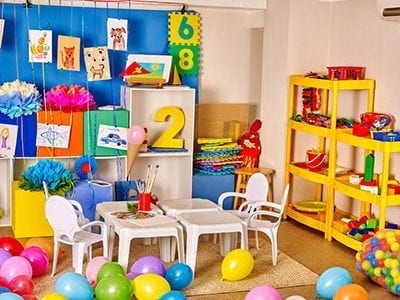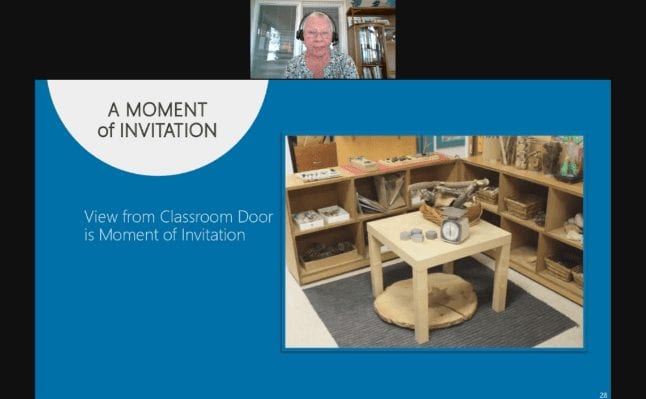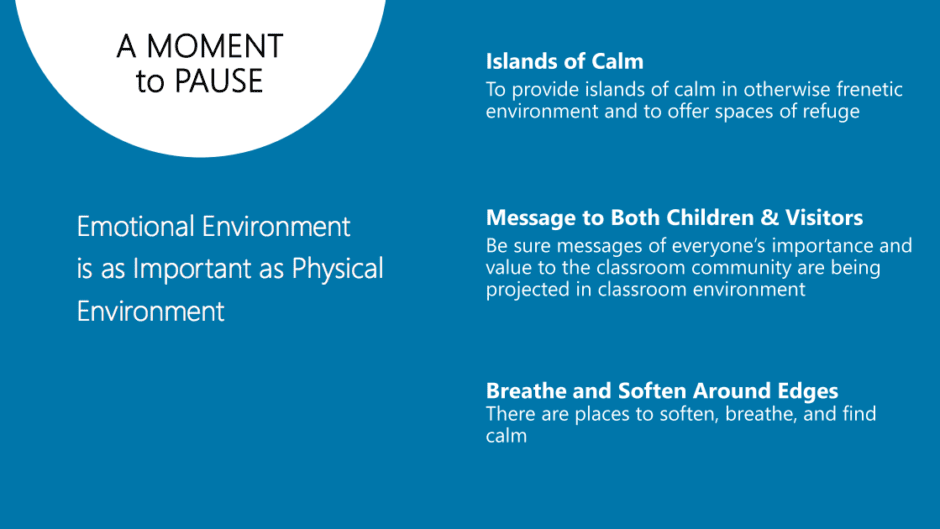Designing Classrooms from a Young Child’s Perspective
When an adult (parent, educator, guest) visits a preK classroom, they see all of the wonderful learning opportunities for the children. They see the reading nook in the far back corner, the rug for meeting and circle time near the display board, the shelves full of toys and manipulatives, and the tables and chairs that greet the children as they enter the room. The students see: the chair and table legs, possibly their cubby, and not much else. According to early childhood expert Dr. Sandra Duncan, when creating an inviting classroom environment for young children, educators need to look at it from the kids’ perspective. In her edWebinar “Through a Child’s Eyes: How Classroom Design Inspires Children’s Learning and Wonder,” Dr. Duncan explained how designing the space with a young child’s physical and emotional viewpoint in mind can ease anxiety about and create excitement for learning.
In addition to their limited height, Dr. Duncan explained why young children have a unique point of view. First, they are egocentric; they are worried about their own needs. So, when they enter the classroom, they want to immediately see the toy, tool, etc., that is meaningful to them. Second, they can’t extrapolate meaning and have limited capacity to make logical leaps. For example, they won’t necessarily associate the fall leaves hanging from the ceiling with the fall season. Finally, young children have myopic vision. They only see what’s right in front of them or at their feet.
When designing rooms for young children, Dr. Duncan advised attendees to think of three key moments during the school day.
- A moment of invitation: Think of the view from the doorway. Do kids just see their cubbies and chairs, or do they see materials that will get them excited about being in school that day. For example, Dr. Duncan suggests having a curiosity table near the door that will inspire children to explore.
- A moment to pause: The emotional environment is as important as the physical. Children need to have a place where they can breathe when needed. Educators should create an island that is a calm space with comfortable seating, books, and other objects that can allow kids to take a brief break.
- A moment to connect: The children, parents, and educators need to connect at the beginning and the end of the day. This may not only be rituals for saying hello and goodbye to the kids but can extend to the layout of the room. Don’t have the sign-in/sign-out sheet at the doorway, for example, said Dr. Duncan. Put it further in the room so that educators have a chance to greet the parents during drop-off and pick-up and tell them about their child’s day.
In turn, changing the layout of the room to a child-centric focus can provide important benefits. When the view from the door engages the children, it eases their transition from the outside into the world inside the classroom. Similarly, when the children’s view isn’t blocked by backs of cabinets and cubbies, they can see all of the activities that the room has to offer and their viewpoint is expanded. Finally, designing classrooms from the child’s perspective increases the students’ focus and engagement.
“We can design spaces that inspire learning and children’s sense of wonder,” affirmed Dr. Duncan. “We can design spaces that preserve the magic and the wonder of childhood by creating places that allow children to simply be children. It’s what children need, and it’s certainly what they deserve.”
This edWeb broadcast was sponsored by Gryphon House.
This article was modified and published by eSchool News.
About the Presenter
Dr. Sandra Duncan is an early childhood educator specializing in classroom design and its impact on children’s interaction with the classroom environment. With almost 50 years of experience in the early care and education field, Dr. Duncan has extensive experiences in publishing curricula and teacher resources, playing with young children, training early childhood professionals, teaching at the university level, designing professional development programs, working with parents and CDA candidates, and authoring several books. She is the author of Inspiring Spaces for Young Children; Rating Observation Scale for Inspiring Spaces (ROSIE); Rethinking the Classroom Landscape: Creating Environments that Connect Young Children, Families, and Communities; and Bringing the Outside In: Ideas for Creating Nature-Based Classroom Experiences for Young Children as well as numerous articles on early childhood environments and connecting children with nature.
Join the Community
Early Learning Book Chats is a free professional learning community on edWeb.net that helps educators and caregivers find the tools that they need to bring the joy of learning to young children.






Comments are closed.